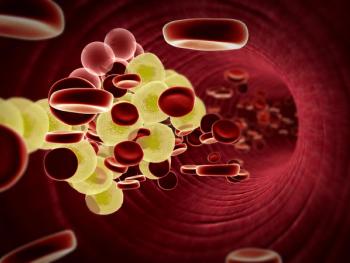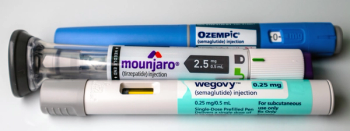Pneumococcal conjugate vaccine 13 (PCV13) protected against serotype 6C for invasive pneumococcal disease (IPD) and nasopharyngeal carriage in children and had some indirect protection for adults, according to results of a study published in Vaccine. Investigators said the results support that serotype 6A—but not 6B—in PCV10 provided cross-protection to 6C.
According to the study authors, PCVs differ in which serogroup of serotype 6 they target. For example, PCV7 and PCV10 only target 6B, whereas PCV12, PCV15, and PCV20 target serotypes 6A and 6B. It has been hypothesized that antibodies against 6B could provide cross-protection for 6A, which has been proven in studies of PCV7, but there was no cross-protection against 6C, according to the study authors. They added that 6C is one of the most frequent serotypes that causes IPD, pneumococcal pneumonia, otitis media, and nasopharyngeal carriage.
To date, there have been no randomized head-to-head studies that evaluated the immune responses by PCV10 and PCV13 against serotype 6C. Therefore, investigators aim to re-evaluate the evidence of both vaccinates against 6C disease. They conducted a systemic literature review of the direct, indirect, and overall effects of the vaccines against serotype 6C. The review evaluated invasive and non-invasive disease, nasopharyngeal carriage, and antimicrobial susceptibility, according to the study authors.
Investigators included randomized controlled trials and observational studies, with direct effect defined as the impact on vaccinated individuals, calculated by comparing disease occurrence in vaccinated and unvaccinated individuals, and indirect effect defined as the impact on a population-level due to widespread vaccination, measured by disease occurrence in unvaccinated individuals from a population with a vaccination program and those without one. For overall effect, investigators defined it as the effect of the vaccination program on the entire population, estimated by the occurrence of disease in a population with and without a vaccination program.
There were 112 articles included in the study, with 7 studies including the direct effect, 20 including the overall effect, and 79 comparing the proportions before and after PCV10 or PCV13 introduction, according to the study investigators. Approximately 68% of articles had at least 1 risk of bias, with 53 articles having a high risk of bias in at least 1 domain and 24 having at least 1 uncertainty.
For the direct effect, all 7 studies were conducted in children younger than 10 years of age. Investigators reported that vaccine efficacy ranged from 70% to 85% for 1 or more doses to 94% for full vaccination, but there were no studies that examined the direct effect on non-invasive disease. For carriage, 1 study showed that PCV13 vaccination provided 66% of additional protection compared to PCV7, according to the results. For PCV10, there was no protection or additional protection reported for 6C invasive disease or carriage.
Key Takeaways
- PCV13 vaccination demonstrated 70% to 85% efficacy in preventing serotype 6C IDP in children.
- Although not directly measured, serotype 6C IPD rates declined in adults following PCV13 vaccination in children, suggesting some indirect herd immunity.
- The PCV10 vaccine, targeting a different serotype 6 variant, offered no protection against serotype 6C.
Investigators also reported that for serotype 6C IPD rates or nasopharyngeal carriage, the prevalence declined post-PCV13 in children and in nearly half of the studies with adults, but increased post-PCV10 vaccinations in all studies, according to the results. Furthermore, investigators reported that for antimicrobial susceptibility, there were no consisted changes pre- and post-PCV13 introduction in any age groups.
Investigators said that limitations in the study must be accounted for, including the observational nature of the study. They added that this could have led to biases and compounding factors of the studies.
Reference
Grant LR, Hanquet G, Sepúlveda-Pachón IT, et al. Effects of PCV10 and PCV13 on pneumococcal serotype 6C disease, carriage, and antimicrobial resistance. Vaccine. 2024. doi:10.1016/j.vaccine.2024.03.065


















































































































































































































